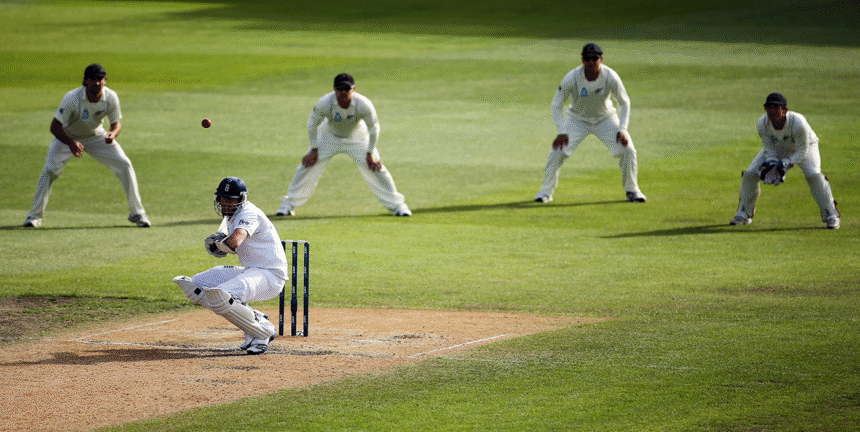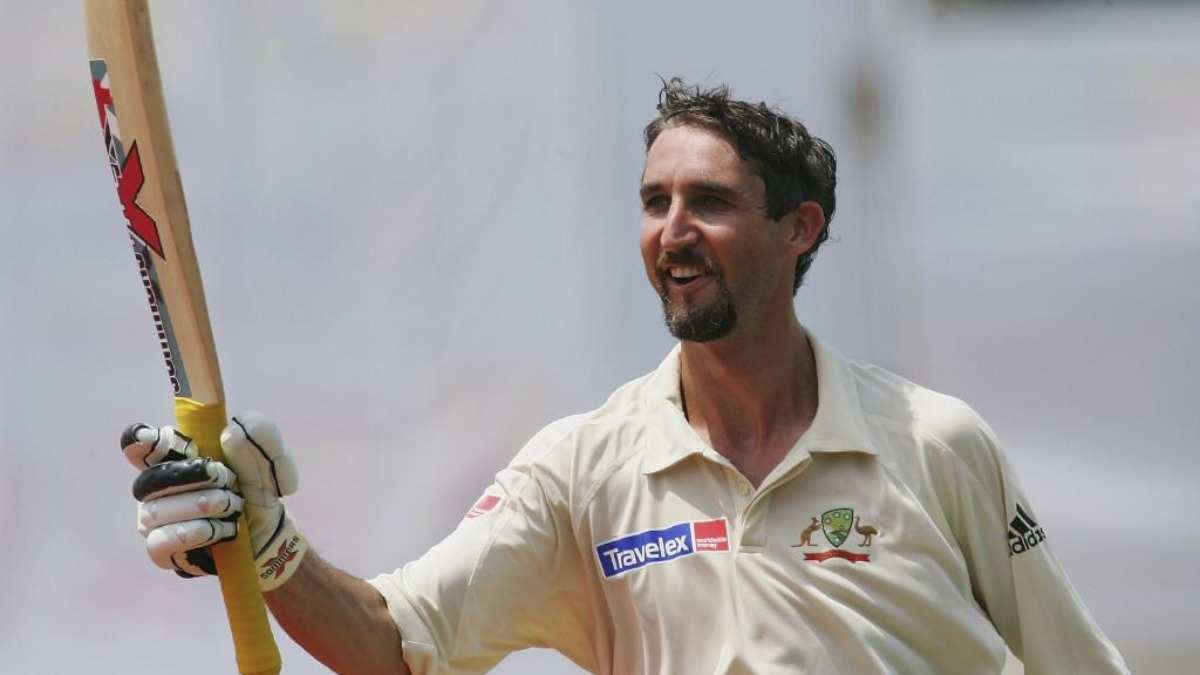Ever watched a Test match and wondered why a bowler suddenly walks out to bat late in the day? No, it’s not a mistake. That’s the nightwatchman in cricket — one of the game’s unsung heroes. He’s not there to hit boundaries or rack up runs. His job? Simple. Just don’t get out.
In a world full of sixes, strike rates, and powerplays, the nightwatchman in cricket feels like a relic from another time — a quieter, slower, grittier time. Yet, this role once embodied the essence of Test cricket: patience, strategy, and sacrifice. So let’s take a walk down the worn-out pitch and revisit this forgotten art.
What Exactly Is a Nightwatchman in Cricket?
Alright, let’s clear this up. A nightwatchman in cricket isn’t a player who only bats at night — although the name might suggest that. Instead, he’s usually a lower-order batter (often a bowler) sent in when a top-order wicket falls late in the day. The aim? Shield the next batter from the pressure cooker of fading light and fired-up fast bowlers.
It’s not about runs. It’s about survival. Think of it like sending your pawns out before your queen. You sacrifice one to save another.
The nightwatchman’s mission is to bat out the remaining overs of the day, come back the next morning, and hand the baton back to a proper batter. It’s strategic, selfless, and honestly, a little romantic.
Where It All Began: The Roots of the Role
This tactic didn’t just fall out of the sky. It grew out of Test cricket’s oldest love affairs — with weather, light, and momentum. Back in the day, when matches stretched for five days and batters built innings over hours, saving your best man for the morning made perfect sense.
One of the earliest known uses came during the 1930s, courtesy of England’s Douglas Jardine (yes, the same guy from the Bodyline series). He sent in a tailender late in the day to preserve his top-order for clearer skies and calmer bowlers.
By the time the ‘70s and ‘80s rolled around, the nightwatchman in cricket was almost a regular fixture. Teams even had designated players ready to pad up and block for their lives — not for fame, but for the team. A thankless job? Maybe. But one soaked in respect.
Strategy Meets Symbolism: Why It Still Matters
The beauty of the nightwatchman in cricket is that it’s more than just a tactic — it’s a statement. It says, “We play smart. We play for the long haul.” It’s chess, not checkers.
Picture this: The sun’s dipping, the new ball’s biting, and the crowd’s on edge. Out walks a No. 10 batter, chin up, shoulders back, facing down the world’s best bowlers. There’s something poetic in that moment — like watching a foot soldier stand guard while the general catches his breath.
This decision also messes with the opposition. Just when they think they’ve got a sniff at another big wicket, they’re forced to grind through a player who has no interest in flair — just survival.
But like every tactic, it comes with debate. Some say it’s too cautious, too old-school. Others argue it’s a necessary weapon in a captain’s toolkit. The truth? It’s all about timing and trust.
The Mental Game: Pressure Without Applause
Being a nightwatchman in cricket isn’t just about padding up. It’s about walking into a storm with a teaspoon. There’s pressure — a ton of it.
You’re a bowler. You’ve spent your career avoiding the limelight with the bat. Suddenly, you’re expected to face the music when it’s at its loudest. No one wants you to score. But they desperately need you to stay in.
It’s a role with almost no upside. Get out, and you’ve failed. Stay in, and people shrug. But inside that dressing room? You’re a hero.
The mental toll can be brutal. The spotlight burns brighter at dusk, and some players just aren’t built for it. It’s why the nightwatchman in cricket isn’t used by every team — and why it takes a special kind of grit to take on the role.
Moments That Made the Nightwatchman a Legend
Sure, most nightwatchmen quietly do their job and leave without fanfare. But every now and then, one of them flips the script.
- Jason Gillespie’s double century in 2006 is the stuff of legend. Sent in to survive the night, he stuck around for two whole days and walked off with 201 not out — the first and only double ton by a nightwatchman. Oh, and it was his last Test. Mic drop.
- Jack Leach’s famous single run in the 2019 Ashes? Classic nightwatchman in cricket stuff. He may not have scored much, but he stayed long enough for Ben Stokes to pull off one of the greatest innings ever at Headingley.
- Mark Boucher, Shivnarine Chanderpaul, Ryan Harris, Steve Finn — the list goes on. These are the men who turned gritty survival into game-defining moments.
Why the Nightwatchman Is Disappearing
Let’s face it — Test cricket isn’t what it used to be. The T20 era has changed everything. Batters are braver (or crazier), pitches are flatter, and everyone wants to entertain.
Enter Bazball — England’s fearless, hyper-aggressive approach to Test cricket. In this new world, the idea of blocking for survival seems… outdated.
Why send in a blocker when you can send in someone who might smash a quick 30 before stumps? Why play safe when the crowd wants fireworks?
On top of that, most tailenders today are handy with the bat. No. 8s can score centuries. No. 9s can pull and cut like openers. The need to protect top-order batters just isn’t as urgent anymore.
So, the nightwatchman in cricket quietly exits stage left — not with a bang, but with a nod.
When Things Go Wrong: The Nightwatchman Backfires
Let’s not pretend it’s always a success story. Sometimes, the nightwatchman in cricket idea crashes and burns.
You send him in, he lasts three balls, and suddenly your next batter walks out in even worse conditions. That’s not strategy — that’s self-sabotage.
Worse still, some nightwatchmen survive but crawl through the next morning, chewing up deliveries and killing momentum. Suddenly, the tactic looks cowardly, not clever.
Then there’s the psychology. Imagine being the next batter, held back because the team didn’t trust you to handle two overs. That can mess with confidence.
Used well, it’s a masterstroke. Used poorly, it’s a meme.
Should We Bring Back the Nightwatchman?
Here’s the million-dollar question: Is there still room for the nightwatchman in cricket in today’s game?
Traditionalists say yes. When the pitch is doing tricks, the ball is reversing, and the lights are dimming — sending in a nightwatchman just makes sense. It’s chess, remember?
But others argue it’s dead weight. The numbers don’t support it. The risks are too high. The game has evolved.
The answer? Somewhere in the middle. Don’t default to it. But don’t abandon it either. Use it like a trump card — rarely, but wisely.
Test cricket isn’t about blasting your way through. It’s about nuance. About reading the moment. The nightwatchman in cricket may be old-school, but in the right hands, he’s still gold.
The Bravery Behind the Blocks
In a game that celebrates stroke play, towering sixes, and glittering centuries, the nightwatchman in cricket is a reminder that not all heroes wear capes — some wear thigh pads and bat for time.
This isn’t about stats. It’s about spirit. The nightwatchman walks in with the odds stacked against him. He’s not there to win the match. He’s there to hold the line so someone else can.
And that takes guts.
Read More: From Ducks to Disasters: The 10 Most Weirdest Cricket Records
Conclusion
As the cricketing world hurtles toward innovation, let’s not forget the quiet traditions that shaped the game. The nightwatchman in cricket might not trend on Twitter, but he belongs in the story.
He represents something we shouldn’t lose — the idea that sometimes, the most valuable contribution isn’t flashy. It’s standing tall when everything around you is falling apart.
So here’s to the 5 not out off 39 balls. To the men who took bruises for the badge. To the ones who didn’t make headlines — but made a difference.
Long live the nightwatchman.







